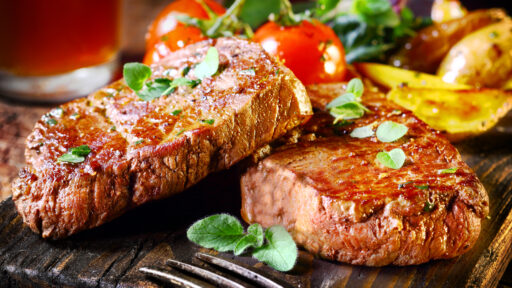If you’re planning a special occasion, you’ll likely want to serve some bubbly celebrate. While Champagne is the go-to choice for many, it’s not the only option. Prosecco is another sparkling wine that’s often used interchangeably with Champagne, but they’re not the same. Here is the lowdown on the differences between Prosecco and Champagne, including where they’re produced, the grapes used, and how they taste. You’ll also get tips on how to choose a good bottle of Prosecco that won’t disappoint.
Key Takeaways:
- Prosecco and Champagne are not the same and have more differences than similarities.
- Understanding where they’re produced, the grapes used, and how they taste can help you choose between the two.
- With the right knowledge, you can confidently select a good bottle of Prosecco for your next celebration.
What Is Prosecco?
Prosecco is a sparkling wine that is produced in a specific region of Italy, with strict rules governing the grape varieties used and the production process. The wine can only be called Prosecco if it comes from the designated areas of Veneto and Friuli Venezia Giulia, as declared by the consortium. The wine is made in both DOC and DOCG areas, with the latter being the highest designation of controlled origin and guaranteed quality.
The primary grape variety used in crafting Prosecco is the Glera grape, which makes up at least 85% of the blend. Originally known as Prosecco, the grape was renamed to avoid confusion with the wine. The remaining 15% can comprise local complimentary varieties, such as select grapes from the Pinot family and Chardonnay. If crafted in the rosé style, only Glera and Pinot Noir grapes are permitted.
Prosecco is typically produced using the tank method, also known as the Charmat method, which involves secondary fermentation in a stainless steel tank. This method results in a fresher and fruitier wine compared to the traditional method used in Champagne, which involves secondary fermentation in the bottle.
Overall, Prosecco is a popular Italian sparkling wine that is known for its light and refreshing taste, making it a perfect choice for celebrations and social gatherings.
What Is Champagne?
Champagne is a type of sparkling wine that originates from the Champagne region in France. To be classified as Champagne, it must follow specific regulations regarding the grapes used, the fermentation and production process, and the aging period before being sold. The three main grape varieties used to produce Champagne are Chardonnay, Pinot Noir, and Pinot Meunier, with other varieties such as Arbane, Petit Meslier, and Pinot Gris occasionally used in blends. The Méthode Champenoise, a traditional method of fermentation in the bottle, is used to produce Champagne. The wine is stored in cellars before being released, with Vintage Champagne being aged for a longer period of time than Brut Champagne.
What’s the Difference Between Prosecco and Champagne?
If you’re a fan of bubbles, you know about both Prosecco and Champagne. While they may both be sparkling wines, there are significant differences between the two.
Grapes Used
One of the most significant differences between Prosecco and Champagne is the type of grapes used. Prosecco is made up of at least 85 percent Glera grapes, while Champagne is made with a blend of Chardonnay, Pinot Noir, and Pinot Meunier grapes. While a few other grape varieties are permitted in Champagne, they are rarely used.
Production Method
Another major difference between Prosecco and Champagne is the production method. Champagne is produced using the méthode champenoise, or “traditional method.” This involves adding yeast and sugar to still wine in each bottle, which kicks off a secondary fermentation that produces carbon dioxide and gives the wine its bubbles. This process takes place in the same bottle that you end up buying and drinking from, which is why Champagne has smaller bubbles than Prosecco.
Prosecco, on the other hand, is crafted using the Charmat method, or “tank method.” This involves adding yeast and sugar to still wine in stainless steel tanks or vats, which kicks off a secondary fermentation that creates the bubbles. This method helps to retain the wine’s fresh and fruity characteristics and is more efficient, which accounts for some of the cost difference between Prosecco and Champagne.
Taste
Given that Prosecco and Champagne are made with different grapes and are produced differently, it’s no surprise that they have different tastes. Champagne is a complex, age-worthy, structured wine that benefits from longer aging on lees to develop its characteristic brioche, toast, and nutty character. It has high acidity and tiny bubbles.
Prosecco, by comparison, is renowned for its charming, fresh, light, and fruity character. This character is not most often begotten by long aging in the bottle, but rather is benefitted by the relative speed and agility of the Charmat method. Prosecco is typically light, fruity, and slightly floral, with medium to high acidity and a slightly sweet taste due to the sugar present. It typically has apple, pear, melon, citrus, and floral notes.
In conclusion, while both Prosecco and Champagne are sparkling wines, they differ in the grapes used, production method, and taste. Whether you prefer the fresh and fruity character of Prosecco or the complex and structured taste of Champagne, both are excellent options for celebrating special occasions or toasting to life’s little moments.
How to Choose a Good Bottle of Prosecco
When it comes to selecting a bottle of Prosecco, there are several factors to consider that can help you choose a good product. Here are some tips to keep in mind:
- Look for Prosecco DOC or Prosecco Conegliano-Valdobbiadene DOCG: These regions are known for producing high-quality Prosecco. Choosing a bottle from these regions can ensure that you’re getting a good product.
- Consider the region: Prosecco can come from Veneto and parts of Friuli. Friulian wines are generally of very high quality and have a richer and creamier texture. For example, Benvolio Prosecco DOC is a great example of a Friulian Prosecco.
- Think about the occasion: Consider how you plan to drink the Prosecco. If you’re planning to add juice or liqueur to it, it’s fine to choose a less expensive bottle. The added flavors will co-opt some of the Prosecco’s character.
- Consider your preference for sweetness: Prosecco can range from dry to sweet. Consider your preference for sweetness when selecting a bottle of Prosecco.
By following these tips, you can choose a good bottle of Prosecco that suits your taste and occasion. Keep in mind that price doesn’t always indicate quality, so be sure to consider all the factors before making your selection.






